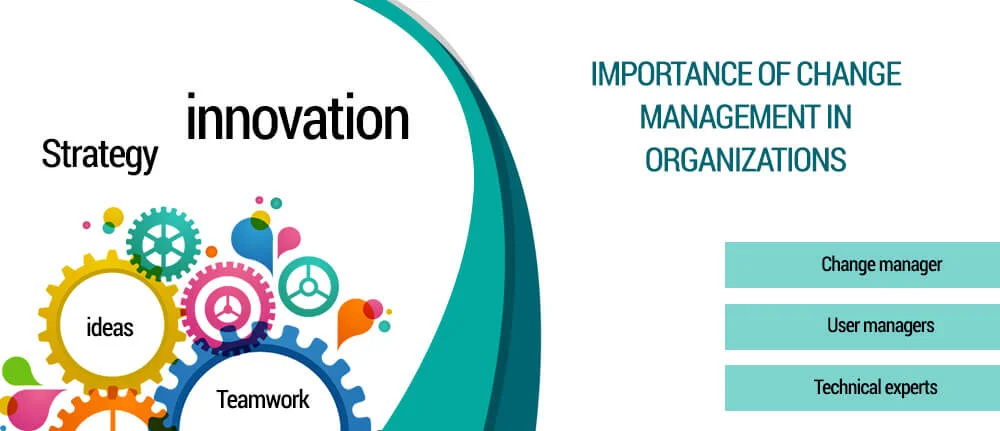Power BI Report Server: Key Features and Elements
Every CTO knows the struggle of managing complex reports. The inefficiency of scattered data, the constant juggling between reporting tools, the challenge of ensuring accurate KPIs...
iFour Team - July 21, 2017
Listening is fun too.
Straighten your back and cherish with coffee - PLAY !

“Change is hard at first, messy in the middle but gorgeous at the end”
Change can be defined as a transition from one particular to situation to another. An organization may need change with the key motive of improving performance.
Change management hence is the skill of making this transition using proper resources, tools, techniques and planning that would bring significant benefit to the organization or global software companies in USA. Through change management, individuals are guided and motivated to accept and prepare to adopt the change coming to the organization. The main success of any change process depends on how well the employees of the company accept the change. When employees embrace the change, the organization’s success is bound to be, otherwise change is of no use.
Change management is an organized approach to help the organization to change from a current state to an intended future state. In this article, we will understand as how change influences any project.
A change in any organization may be required for various reasons. The urgency of this change may differ from situation to situation. There might be cases when in one hand a change could be inevitable for an organization but on the other hand some other organization would not even want that change.
Following are some reasons because of which most organizations are bound to change:
Crisis of any sort would force an organization to change for its survival.
Changes are required when goals are not being met in an organization in spite of all efforts.
A technology change is something which every organization needs to go through for its survival.
A change is required if an opportunity is seen that could bring tremendous organizational success.
If some external or internal compulsion forces to bring in a change. For eg. Change in government policies, change in financials.
Mergers and acquisitions bring change or conversely, it can also be said that mergers and acquisitions are done to bring change.
A change in the trend also brings a change in any organization as any organization will only succeed if it moves with the ongoing trend.
Practically speaking, there is no boundary to what all areas change can be made. It depends on the extent of the change needed. At times the entire infrastructure of an organization might have to be changed and at times only one document change could be enough.
Any change – application software change, documentation change, procedure change comes under project change management process. When change is to be made, there are several departments which are related to the change management. The project change management team is to coordinate with the application management team in order to ensure a smooth change implementation. The change advisory board (CAB) decides on which change to approve and which to not and the change management team has to make the change happen. The CAB comprises of:
A change manager
User managers and groups,
Technical experts
They are mostly from other functional departments than the change management department.
The configuration management team makes sure that the information on the likely outcome of a proposed change is made available.
Most of the times, a change in the infrastructure change in one part of the organization can bring some unwanted change in some other part. It is hence important to keep in mind all the aspects of an organization when any change is to be applied. It is not always the change management team which is fully responsible for all the changes. All departments need to integrate to make a change successful. For example, the responsibility for identifying the components affected by change is on the configuration management team and the release of those changed components is on the release management team.
Change management process includes:
Raising an issue for change
Impact assessment of that change
Developing the justification to get the change approval
Managing the change implementation
Monitoring and reporting the process
Closing the process
A change management process should focus on both technical and people side. The technical side should focus on correct designing and implementation of the change by using a structure, process and appropriate tools. The people side focuses on the employees who are also supposed to go through the change. It is to be made sure that the employees accept the change as they are the ones who need to continue the work even after the change is made.
Change management aims that organizations or IT companies in USA deliver better outcomes and results. The important thing here is that the organization should understand the change as a whole and take necessary steps for its success.

Every CTO knows the struggle of managing complex reports. The inefficiency of scattered data, the constant juggling between reporting tools, the challenge of ensuring accurate KPIs...

The very first reason why you should implement Row Level Security is to foster trust, a crucial element for any business's success. Next, it reduces data clutter and helps you load...

The performance of Power BI is significantly influenced by two essential factors: design consistency and the rapid loading of BI elements. This holds true whether you choose Tableau...